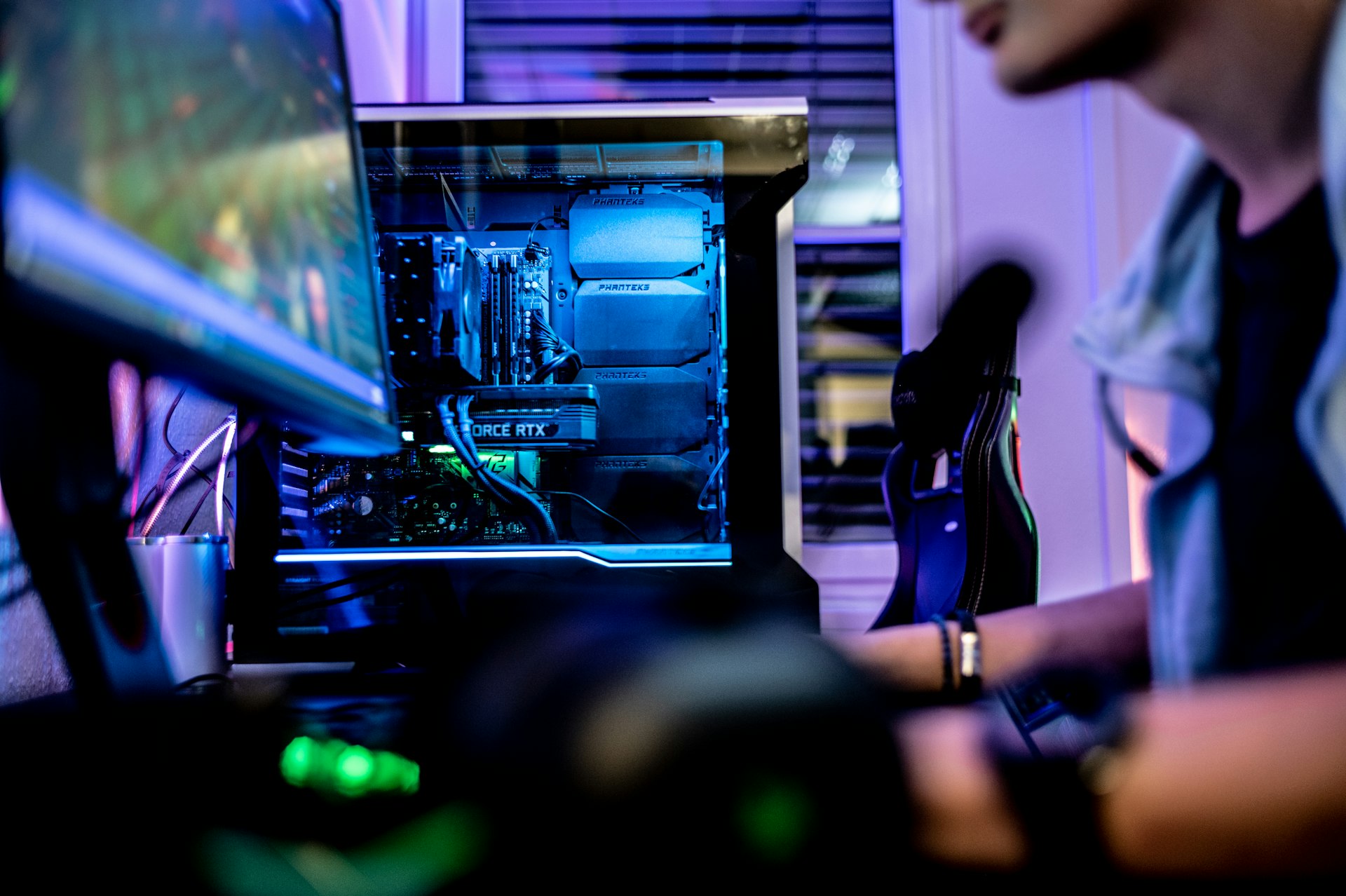The Future of AI-Powered NPCs: Transforming Digital Worlds and Gameplay

Photo by Declan Sun on Unsplash
Introduction
The integration of artificial intelligence into non-player characters (NPCs) is rapidly transforming the gaming industry and digital entertainment. As AI technology becomes more sophisticated, NPCs are evolving beyond scripted roles, offering more immersive, interactive, and unpredictable experiences for players. This article explores the future of AI-powered NPCs, detailing their technological advancements, practical applications, implementation strategies, challenges, and opportunities for players and developers.
Understanding AI-Powered NPCs
Traditional NPCs in games have relied on pre-set scripts and limited decision-making abilities, leading to predictable and repetitive interactions. AI-powered NPCs, however, leverage machine learning, natural language processing, and adaptive algorithms to deliver human-like behaviors , decision-making, and dynamic responses. Unlike their scripted counterparts, these NPCs can:
- Engage in natural, context-sensitive conversations
- Adapt their behaviors based on player actions and environmental changes
- Create emergent storytelling and unpredictable scenarios
- Learn from interactions for more personalized gameplay experiences
Recent games such as
Cyberpunk 2077
(with AI mods),
The Finals
, and experimental indie projects have showcased the growing potential of AI-driven NPCs, offering more realistic and engaging gameplay
[3]
.
Technological Innovations Powering NPC Evolution
AI NPCs are powered by several key technologies:
- Machine Learning: Enables NPCs to adapt and improve behavior over time, responding to player choices and environmental cues.
- Natural Language Processing (NLP): Facilitates realistic, meaningful conversations between players and NPCs, allowing for nuanced and context-aware dialogue [4] .
- Emotional AI: Allows NPCs to display believable emotional reactions, enhancing immersion and realism.
- Procedural Generation: Supports the creation of lifelike worlds and NPCs that can adapt and evolve, making each player’s experience unique [1] .
Major studios are investing in generative AI for NPCs. For example, NetEase introduced a generative AI companion in
Cygnus Enterprises
, and Niantic launched
Wol
, an augmented reality experience powered by Inworld AI. Xbox has also partnered with Inworld to develop new AI NPC technology
[2]
.
Actionable Strategies for Developers
Developers aiming to implement AI-powered NPCs should follow these steps:
- Assess Current Infrastructure: Evaluate game engine compatibility with AI frameworks such as TensorFlow or PyTorch.
- Integrate Machine Learning Models: Use supervised or reinforcement learning to enable NPCs to adapt to player actions.
- Deploy NLP Solutions: Implement NLP libraries to enhance conversational abilities, making dialogue more engaging and context-sensitive.
- Test Adaptive Behaviors: Simulate various player interactions to ensure NPCs respond appropriately and enhance gameplay.
- Monitor and Iterate: Continuously refine AI models based on player feedback and gameplay data.
For developers new to these technologies, consider starting with open-source AI frameworks and experimenting with NPC behavior in small-scale projects before scaling up to full-feature games.
Opportunities for Players and Industry Professionals
Players interested in experiencing AI NPCs can:
-
Search for games featuring AI NPC technology, such as
Cyberpunk 2077
(with mods),
The Finals
, and experimental indie titles. - Follow updates from major studios like Xbox, NetEase, and Niantic, who are actively investing in AI NPC innovation.
- Join gaming communities or forums to discuss experiences and provide feedback, influencing future development.
Industry professionals can stay informed by subscribing to blogs and newsletters from leaders such as Inworld AI and Novus Asi, attending gaming conferences, and engaging with research publications on AI in gaming.
Real-World Examples and Case Studies
NetEase’s Cygnus Enterprises features an AI-powered companion that evolves alongside the player, adapting its strategies and interactions based on gameplay. Niantic’s Wol uses advanced AI to create augmented reality NPCs capable of conversational engagement and environmental adaptation. These innovations demonstrate how AI NPCs are reshaping player expectations and game design [2] .
Experimental indie games have also pushed boundaries, utilizing procedural generation and adaptive AI to create unique player journeys. In multiplayer shooters like
The Finals
, AI opponents and allies adjust their tactics in real-time, offering unpredictable and challenging encounters
[3]
.
Challenges and Solutions in AI NPC Development
Despite their promise, AI NPCs present several challenges:
- Technical Complexity: AI integration requires robust hardware and optimized algorithms to ensure smooth gameplay. Developers should prioritize scalable infrastructure and efficient code.
- Ethical Considerations: As NPCs become more lifelike, questions of consent, privacy, and player influence emerge. Developers must design clear boundaries and transparent interactions [1] .
- Resource Intensity: Advanced AI models can be computationally expensive. Using cloud-based solutions and procedural techniques can help distribute workloads.
- Balancing Unpredictability: While emergent behavior enhances realism, it can also disrupt game balance. Developers should thoroughly test adaptive NPCs to keep gameplay fair and enjoyable.
Alternatives include employing hybrid approaches, combining scripted behaviors with adaptive AI to retain control while offering dynamic engagement.
Future Trends in AI-Powered NPCs
The next generation of AI NPCs will likely feature:
- Autonomous agents capable of multi-part decision-making and problem-solving [5] .
- NPCs that remember player actions, form relationships, and generate new quests or stories, making each playthrough unique.
- Cross-game character development, where NPCs persist and evolve across different titles and genres [1] .
- Deep emotional AI, enabling NPCs to react with authentic, nuanced emotions for richer storytelling [4] .
Gamers can expect increasingly lifelike interactions, with NPCs seamlessly adapting to player behavior and contributing to emergent gameplay narratives.
How to Access AI NPC Innovations
If you’re eager to experience or implement AI-powered NPCs:

Photo by Vadim Bogulov on Unsplash
- Explore games and mods that highlight AI NPC technology by searching terms like “AI NPC games,” “adaptive game characters,” and “generative AI companions.”
- Subscribe to official blogs and newsletters from leading companies such as Inworld AI and Novus Asi for updates on new releases and case studies.
- For developers, start with open-source libraries like TensorFlow, PyTorch, or Unity’s ML-Agents to experiment with AI-driven behaviors.
- Attend major gaming conferences or webinars focusing on AI in gaming to learn about the latest advancements and network with experts.
When searching for resources, always use official company websites, recognized gaming media, or academic platforms. If you’re unsure, seek recommendations from professional forums or industry associations.
Key Takeaways
AI-powered NPCs represent a groundbreaking shift in digital entertainment, offering deeper immersion, greater unpredictability, and personalized gaming experiences. As technology advances, both players and developers can look forward to richer, more interactive worlds shaped by intelligent, adaptive NPCs. For those interested in exploring or building AI NPCs, start with recognized platforms, experiment with available tools, and remain engaged with industry developments to stay at the forefront of this exciting trend.
References
- [1] Capermint (2024). Everything You Need to Know About Non-Player Character (NPC).
- [2] Inworld AI (2024). AI NPCs and the Future of Gaming.
- [3] Technoid Inc. (2024). How AI NPCs Are Transforming the Future of Gaming.
- [4] Novus Asi (2024). The Future of AI in Gaming: From NPCs to Game Design.
- [5] SmythOS (2024). Autonomous Agents in Gaming: Creating Smarter NPCs.
MORE FROM dealseekersguide.com













